About this detail of the Tiger
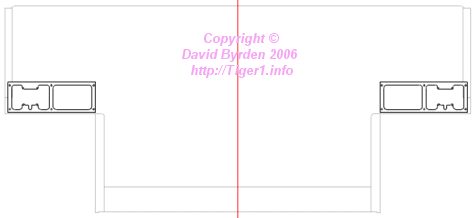
The first production Tiger E had mudguards on the rear plate. They were fixed in place by 6 bolts. Each one was bolted to a metal frame that was welded to the rear plate, as shown above.
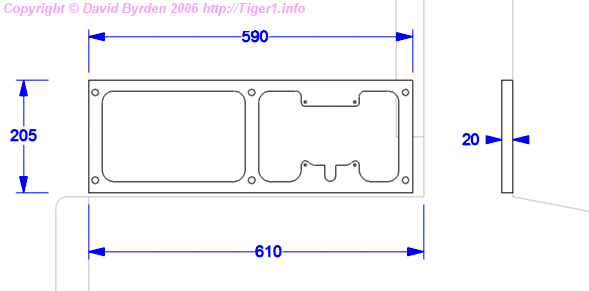
This diagram shows the position of the right-hand frame. It was slightly narrower than the width of the sponson. Left- and right-side frames were mirror images of each other.
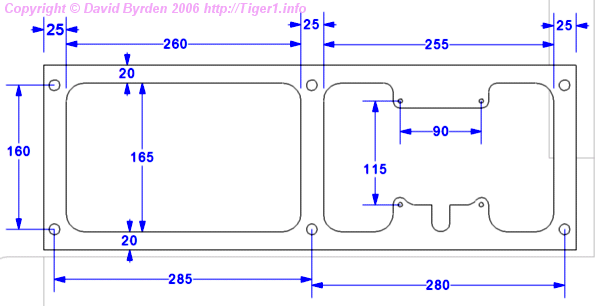
Each frame had 6 threaded holes for the mudguard. It also had 4 holes for a lamp fixture. Below them was a slot where the wiring for the lamp would emerge through the hull wall.
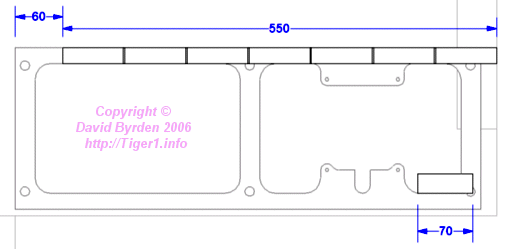
Around November 1942, the mudguards were redesigned with hinges so they could be lifted for access to the tracks [2, see 3.4.1.3] . The 6 threaded holes were no longer needed, but they remained.
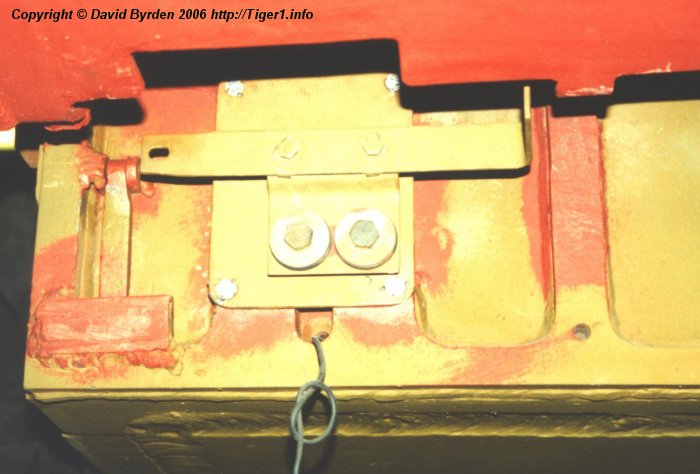
A rubber pad was added to the bottom outer corner of each frame. A folding support arm was added, to hold the mudguard in the raised position. This photo (of the Bovington vehicle during restoration) shows the left-hand frame. The support arm and rubber pad are at the left of the picture.
In May 1943, these frames were deleted from the Tiger's design. Instead, the mudguards were welded directly to the hull wall.
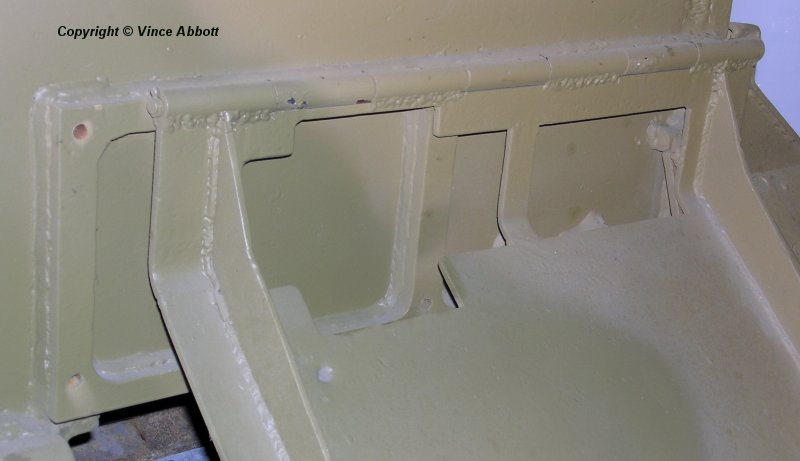
This photo (of the restored Bovington vehicle) shows how the mudguard sat on the frame.
[1] Survey of Tiger 250122, at Bovington museum, by David Byrden
[2] DW to Tiger 1